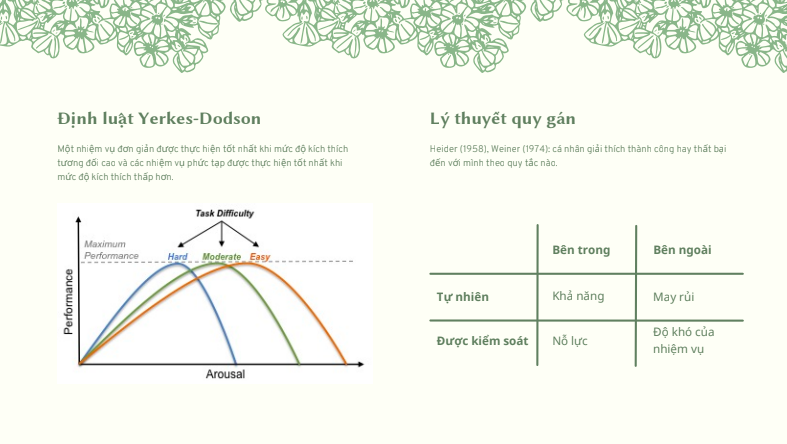The online workshop provided diverse perspectives on how to motivate learning and design a meaningful student life through psychological theories and real-life questions and experiences shared by participants.
The origins of motivation
Beginning her presentation, Dr. Dang Hoang Ngan shared insights on the origins of motivation. Motivation is the reason why we act. The clearer we are about the reasons behind our actions, the better we understand our own behaviors and responses. According to psychologists, human motivation comes from both external and internal sources.

- Conditioning (external reinforcement): receiving a reward, avoiding a certain punishment.
- Social recognition stems from both external and internal motivations: imitating positive models, acquiring effective social skills, and becoming part of a group.
- Awareness: aimed at understanding and discovery; problem-solving and decision-making; eliminating threats or risks.
- Emotions: increased feelings of well-being and, conversely, reduced threats to self-esteem; maintained and enhanced levels of optimism and enthusiasm.
- Goal-oriented thinking: meeting personal development goals; achieving personal dreams; developing or maintaining personal effectiveness; reducing other people's control over one's life.
- Biology: Reduces feelings of hunger, thirst, and discomfort, maintaining homeostasis.
- Spirituality: understanding the purpose and meaning of life; connecting oneself with the unknowns of life.
In addition, the speaker introduced the Yerkes-Dodson Law and attribution theory to the attendees. According to the Yerkes-Dodson Law, we need a little stress to be motivated to work or study. In the model below, the ability to perform an action is described on the vertical axis, and the horizontal axis describes the stimuli, needs, and demands of the situation. When stress reaches a reasonable level, the ability to work also increases. She emphasized that students need to analyze the learning task they are doing in relation to their own abilities, determining whether it is easy or difficult. If the task is easy, they should demand more from themselves; if the task is difficult, they should demand less. Attribution theory suggests that each person explains their own success or failure based on certain principles, either internal (ability, competence) or external (luck, difficulty of the task).
 How to create motivation for learning
How to create motivation for learningDr. Dang Hoang Ngan shared insights on the interruption effect of Russian psychologist Zeigarnik. This effect suggests that when we are concentrating on something and are interrupted, it can reinforce our memory and reinforce our belief that we can still complete the unfinished task. Additionally, the speaker presented several methods for developing student motivation.
 Life has meaning.
Life has meaning.
Dr. Dang Hoang Ngan shared her perspective on a meaningful life with five elements: positive emotions, connection, positive relationships, meaning, and accomplishment. A memorable student life requires young people to observe and nurture these five elements within themselves. However, she emphasized that: "If you encounter failure somewhere, you still have other elements to support and improve yourself." For example, when you feel you haven't achieved anything, remember that you still have other resources by your side: positive relationships, connection, and meaning in life.
Finally, the speaker discussed Alderfer's (1972) motivational theory. This theory posits that there are three needs that humans seek to satisfy: survival, connection, and growth. When one need is met, it becomes the motivation to satisfy another.
To conclude her presentation, Dr. Dang Hoang Ngan emphasized: "Small things can have great significance, and it all begins with our own actions. I wish you all much joy and meaning in your lives."
Webinar #2, themed "Learn with Passion - Live Meaningfully," concluded with very positive feedback from participants. The webinar was expected to provide young people with valuable and interesting knowledge and experiences to motivate them in their studies and help them design meaningful lives.




